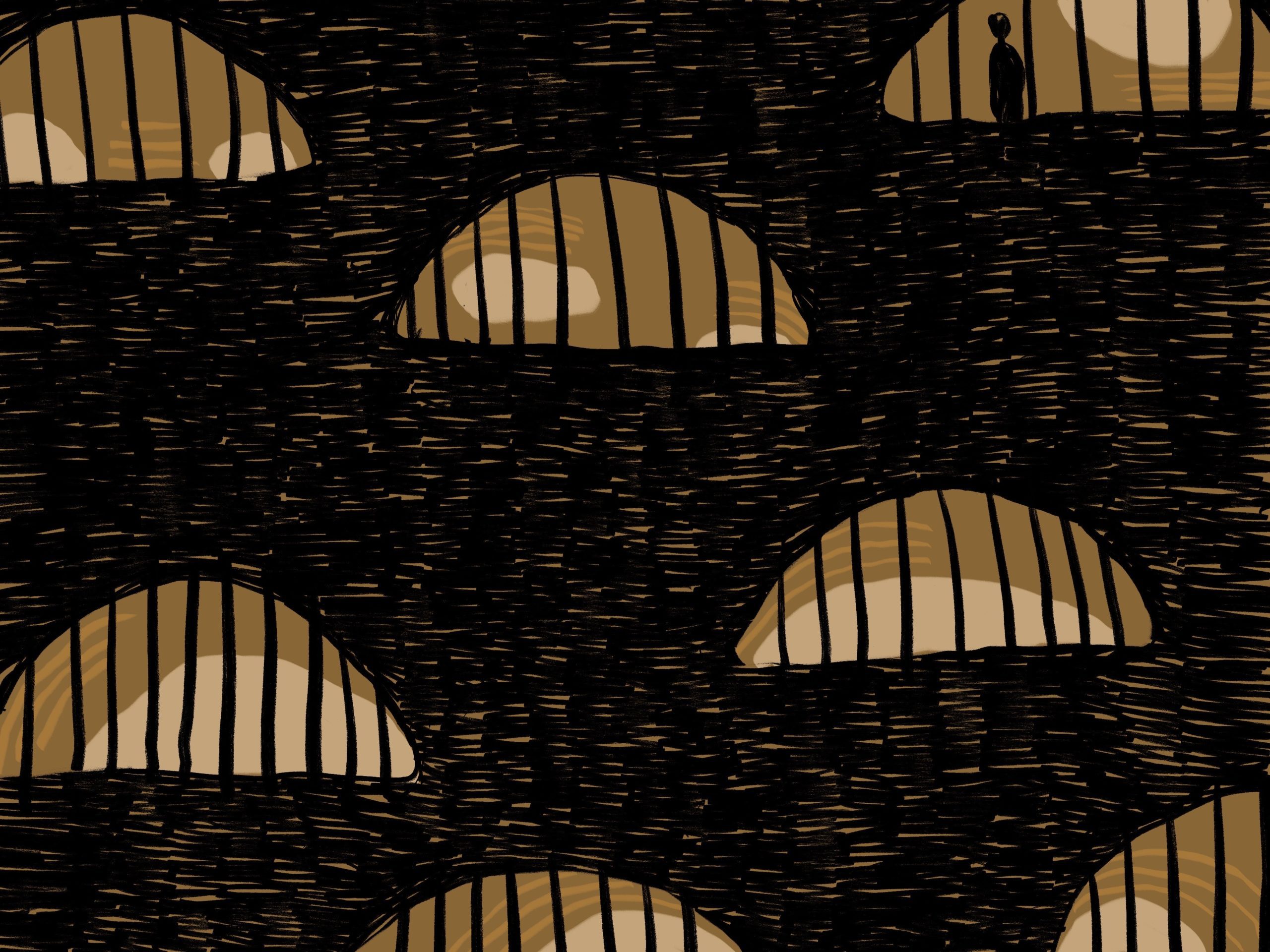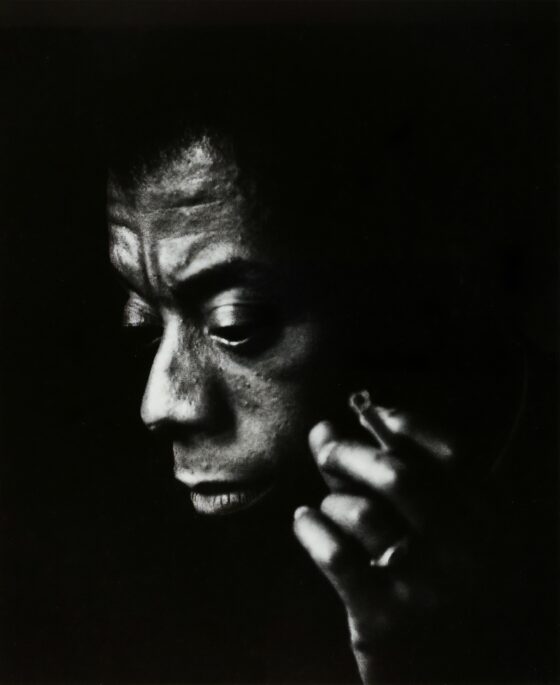
I.
At the beginning of each school year, my Catholic elementary school decorated the stairwells and hallways with new posters. Variations of “Jesus Loves You,” “Always Try Your Best” hung on the walls. But one sign that never changed was the one that read “Fallout.” When I was in second or third grade, I started noticing the signs designating the school had once been a fallout shelter. I remember the workload increasing and the books getting larger and heavier, resembling the dictionaries and volumes of Encyclopedia Britannica at the back of the classroom. At that time, I still had active inflammation from arthritis in my body, not as much as I did at the onset of my Juvenile Rheumatoid Arthritis (JRA) diagnosis at the age of two, but present enough to not be considered in remission. With a sore back, stiff hands, and knees red with inflammation, I couldn’t carry my new textbooks.
To combat the inflammation, my treatment plan consisted of physical exercise to gain body strength and stamina. Beginning in the second grade, my exercise plan started with morning stretching and exercising to dust the stiffness from my joints. Before my mom would drop me off at school for the day, we would flip through the cartoon-illustrated sheets of exercises. Instead of the anatomically correct images in medical textbooks with each joint and muscle carefully labeled, my exercise sheets showed cartoon kids resembling a cross between Cabbage Patch Dolls and Little Critter completing each exercise. I looked a little bit like Little Critter too, with my school uniform jumper and curly, brown hair. I would touch my toes ten times, lift tiny one-pound weights over my head, and stand on my toes. After school, I would go from my extra-curricular activities, such as dance or Spanish club, to physical therapy. I’d walk on the treadmill, take a break on the rowing machine because my legs were too short to reach. I’d stretch out on the mat, talking to my physical therapist about my new Lisa Frank school supplies or who got in trouble at recess today. Around me high school athletes rehabbed injuries before their next season, lawyers discussed their cases, accountants discussed their preparation for tax season, and doctors complained about required paperwork.
At eight or nine, I didn’t realize what I was doing was unique to my health situation, I thought every second or third grader spent their evenings pumping iron in the gym. After all these years, it still doesn’t seem out of the ordinary. In second grade, however, I was still having problems with tasks the other kids had mastered years before. Tying shoes and opening doors were impossible, (confession: there are still some doorknobs that stump me). Steep steps posed problems often causing sharp pain in my knees and hips. I would often lag behind my classmates as I took a break on the steps, mentally tracing the letters and symbol of the fallout shelter sign staring back at me.
II.
Long before I walked past the school’s fallout sign, United States citizens opened their copies of Life magazine, on the morning of September 15, 1961 to discover an alarming note from President Kennedy affirming the country’s vulnerability to nuclear weapons and his plan to survey, identity, and build fallout shelters in an effort to protect 50 million Americans should nuclear war erupt between the United States and the U.S.S.R.. Kennedy’s program identified high risk areas for attack as well as densely-populated areas where fallout shelters could be constructed—these areas were often one and the same.
Shelters worked best in rural areas, rather than in larger cities such as Washington D.C., Boston, or New York City, where there were limited numbers of shelters for the given population. Many of these city-based shelters—basements, subway stations, and electrical tunnels—were filthy and infested with rodents. Since basements of schools, churches, and government buildings were usually centrally located and durably constructed, they became ideal locations for many of the 19,000 approved fallout shelters. Designating schools, churches, and government buildings as fallout shelters ensured that vulnerable members of society were protected from the threat of radiation.
III.
My school’s brick construction had a castle’s regality, which meant in theory once someone entered the shelter, the sturdy building materials would act as arm guards against radiation. The same idea was true for how medications would help me with having a chronic illness. Once the medication entered my body, the chemical makeup of the medication would arm my immune system against attacking itself, a knight in shining armor standing guard at the gate.
And like my school that was once a fallout shelter, neither the shelters nor the drugs offered complete protection from invading forces. Similar to the fallout shelter, these medications were geared toward preventing further structural joint damage and internal damage to cells and organs once an attack already took place. Medications were like being handed an umbrella once it already started raining, or being thrown a lifejacket once you were already in the water, or running into a fallout shelter once you had already been exposed.
Medication and dosing were constantly in flux. Methotrexate was part of my treatment plan, and when I was older, Enbrel or Humira. Methotrexate was originally developed as a chemotherapy drug, but luckily, scientists discovered that Methotrexate could be used to treat autoimmune diseases like arthritis and psoriasis. Regardless of the illness being treated, the higher doses of Methotrexate I was treated with had similar effects to that of radiation: hair loss/thinning, nausea, vomiting, dizziness, chills, fever, tender skin, and swollen gums or mouth sores.
Each day, from my desk, I sat in class seeing the fluorescent yellow fallout shelters’ signs as I experienced my own fallout. I copied my multiplication tables three times each on my carefully tri-folded piece of paper; I traced my cursive letters; I decorated my assigned planet in the model solar system — even though I sat safely in a fallout shelter, my skin and joints ached, the room blurred around me, and I fought the urge to throw-up.
When physical therapy and Methotrexate, combined with other medications like prednisone were found to be slow-acting, my parents bought me a wheeled-backpack for transporting my belongings up and down the steps of my second-grade’s bunker-like classrooms. The backpack was everything the nineties had to offer, a tacky royal blue, with rainbow tie-dye lanyards to pull open the zippers. I personalized the canvas bag with my cousin Maria’s varsity volleyball button, a sticker of a dog, and a Bugs Bunny keychain from the Disney Store.
IV.
The innocence of childhood is supposed to be its own fallout shelter protecting you from harm, but sometimes threats still get in. Being diagnosis with JRA was one of those threats. While symptoms may appear or disappear, the diagnosis never goes away. It gets strapped onto your back and you carry it around with you, sometimes it heavier than others.
Carrying a backpack into a fallout shelter wasn’t anything new; just as having to find creative ways to carry around my arthritis wasn’t new. When buildings were first designated fallout shelters, the government supplied bags containing the bare necessities including crackers, first aid kits, and toilet paper for people to carry into the shelter. Even though my backpack was on wheels, my parents also tried to keep my bag as light as possible. The bare necessities still weighed down the pack as I needed A Magic Tree House book for quiet reading time, my mathematics textbook, my writing book (which showed the proper formation of cursive letters), my large history textbook detailing Colonial America, and whatever other homework I might have that evening. Since the school didn’t have a fulltime nurse, a pouch in my backpack contained my own mobile pharmacy complete with daily JRA medications and over the counter medications such as Tums or Tylenol, which I had to drop off promptly each morning to the school secretary for safe keeping.
In my experience with arthritis, kids who have it don’t want to stand out from their peers. The rolling backpack was the exception to the rule. In my neatly pressed school uniform, the backpack made it appear as if I was going on an exotic cruise or to a business meeting. When I carried a traditional backpack, I was weighed down, hunched over, eyes to the floor–my shyness personified. My classmates stood tall, with their proud heads raised. I liked the backpack on wheels. For once, I was able to keep up physically. Rolling down the hall, I wasn’t lagging behind, and I made eye contact when I talked to my friends or teachers. The downside to wheeling something up the echoing stairs and on the tiled, mosaic-like hallway was the noise factor. People could hear me coming floors away.
The classrooms on each floor of the school were laid out in a large circle, and each classroom was connected to the adjoining one by a door; and each grade had a section behind the classrooms where backpacks and coats were stored. I made one pass up the stairs and down the hallway before I was written up for a noise violation. Devastated, I tried to explain—to no avail—what the neighboring teacher already knew: that I had arthritis and couldn’t carry my backpack.
Although my second-grade teacher didn’t have a problem with my backpack, by the end of the day, the principal, other faculty, and some parents deemed my rolling backpack a safety hazard and a noisy distraction. It was explained that some of the faculty thought I might trip other students or break their toes by running over their feet. They also believed I could kneecap kids with the handle. Apparently, the girl who needed the rolling backpack because she couldn’t lift a traditional bag was going to turn into a Corleone and start whacking my classmates with a backpack.
What my mom and I wanted seemed simple: a fair and democratic educational experience that met my mental, moral, and physical needs. My dad, a special education coordinator, and counselor for thirty-five years, carried around a bulky blue binder labeled, “Rights of Students with Arthritis.” In his office, were filing cabinets filled with similar binders: “Rights of Students with ADHD”; “Rights of Students with Autism”; “Rights of Students with Diabetes.” The information included in all of them was basically the same: students have rights regardless of their health conditions and it is the responsibility of the educational institution to create a conducive learning environment. The binders reminded me of the fallout shelter sign I walked past each day—they protected you from something unseen and something no one quite understood.
V.
My school’s lower floor smelled musky like it hadn’t been opened since Kennedy’s fallout shelter announcement in 1961. Often the cramped and musky quarters of the basements designated as fallout shelters were only large enough to accommodate the school or building’s population, (sometimes not even the entire school’s population) which gave way to other secondary threats. What if other people tried to enter an already filled shelter? Would the school administration need to move students to another sheltered location, exposing them to greater levels of fallout?
Fallout is a deadly radiation which includes the vaporized particles of solid materials. While the exact amount of fallout depends on several factors, the delivery system and the bomb itself plays a vital role. The more direct and accurate the delivery system, the more devasting the fallout. In the end, the fallout would take months to tumble back to earth, spreading out over hundreds of miles and exposing entire populations to dangerous levels of radiation that can reach as high as the stratosphere.
My medication was detonated with the pinpoint accuracy of a needle. It was delivered directly into my bodily systems. But it was like mixing oil and water. As the droplets of the medication emulsified with the rest of my body, fallout was swift and with almost no warning. With the pinprick of the needle, my skin began to burn, and the injection site reddened.
This fallout was also lingering, suspended in my body from one shot to the next, like the particles gathered in a separate layer from the rest of my body, as if the side effects simply floated unidentifiable on a cloud. At first, the headache and nausea would start. As I climbed the school’s backstair case, which was wound tightly like a coiled snake, staring into a needle tip of the basement’s darkness, I would feel overly flushed and feverish. Kids would rush past me to climb to the top floor gym and purposely stare down the six-story drop, while releasing pens and pencils points first, which after several seconds hit the fallout shelter floor, each time a little denoted explosion fluttered back — a reminder that each injection was a tiny subcutaneous explosion. By the end of the week, body aches and dizziness would settle in. Before I knew it, it was time for the next injection and the symptoms would start again.
VI.
As a straight A student with no conduct violations, I made it through second grade, ignoring the distraction of searing pain of JRA and ignoring the fallout, side effects of my medication. What I couldn’t ignore was I was deemed a distraction to learning, for trying to make learning easier for myself. As I rolled the backpack, kids would snap their heads around, distracted from the work on their desks and press their noses against the fishbowl window of the classrooms trying to determine where the noise was coming from. Some of the students and faculty thought it wasn’t fair to the other kids because I was distracting them from their studies or that I got to roll my books, while they carried their loads.
Mom and I tried to explain that as far as we knew, the other students didn’t have a chronic illness and could carry their books. We also tried to explain that I couldn’t use the backpack as a weapon because I could barely lift the books it was transporting. The school’s main concern was, “What if more kids got the noisy backpacks?” Followed, by the exact opposite concern, “It’s not fair to the other students that they don’t have rolling backpacks to make their life easier.” Then, my mother uttered perhaps the one sentence that defined how we dealt with questions and jealously regarding accommodations: “If you look in the dictionary, fair does not mean equal. What’s fair for someone may not be true for someone else.”
While Mom and I were more emotional in our explanation of what we wanted from the school, Dad’s training made him more analytical. He quoted directly from his binder without breaking eye contact with the administration. Dad focused on, “Section 504 of P.L. 93-112, Rehabilitation Act of 1973 and amendments in the Americans with Disabilities Act (ADA),” which was passed in 1990 just two years before I was born and four short years before I was diagnosed with arthritis. It offers blanket protection for students when it comes to access due to health-related reasons. This law is applied to all classroom situations and doesn’t require students to be enrolled in special-education classrooms to benefit from it.
The most straightforward example of this law in effect would be if I mentally knew all the information on a test, but physically could not write all the answers in the time allotted for the test, I would be given extra time to write the answers or be given the option to answer the test questions verbally. Contrary to popular belief, this law illustrates that accommodations are not favors, options, or based on quid pro quo. Accommodations are fundamental rights.
My private school was confused not only by my mother’s statement about fairness, but by my dad’s invocation of law. School administrations are not all that different from our government; it is, after all, a rule-based body created by stratification within the system. It is difficult to lobby for a cause, which requires a majority ruling, when a few of the sitting administrators see the issue as the fearful “other.” Convincing the school of my need for the backpack fell into this category. No matter how many times I explained my situation, some of the members just didn’t believe a child could have arthritis; others couldn’t understand how I could look outwardly healthy while inwardly sick; or how I could run on the playground one minute and not able to lift a book another. Many couldn’t understand, if the medication’s side effects created a fallout, why I didn’t simply stop the medication or change it. They didn’t realize it was slowly working to stop the progression of joint damage; others were simply inconvenienced; and of course, there were others who were extremely accommodating, understanding, and kind about my situation.
When the situation is shrouded in the unknown, fear and that lack of understanding win out. In the end, I was overwhelmed by the idea of going back to using a traditional backpack, which made school stressful by putting undue pressure on my already pressurized joints. Rolling the backpack down the hallway gave me confidence that I could take care of myself while at school. It might have seemed irrational to place my confidence in a backpack, but no more so than thinking a fallout shelter and backpack full of crackers and a first aid kit would save you from nuclear annihilation.
The school administration gave me three options:
Choice number one: Lose the backpack.
“Since it is barely used, see if you can return it,” was the suggestion. The price tags were already in the garbage, and I had rolled it through the school’s gravel and potholed sidewalks. I couldn’t see the local Boscov’s Department store being that forgiving. The sheer boldness of the suggestion swiftly removed it from my parents’ list.
Choice number two: I had to carry the rolling backpack, so it didn’t make noise. I could only carry it in the presence of a teacher, so they could monitor whether I inflicted bodily harm. It was made clear it wasn’t in anyone’s job description to act as my “caddy.”
Even as a child, carrying a rolling backpack made heavier by the addition of wheels seemed counterproductive when the entire point of having a rolling backpack was because I couldn’t carry a light, traditional canvas bag on my back. As an adult, I likened their suggestion to the assumption made by Mary Wollstonecraft’s critics: that her death as a result of childbirth, a womanly demise, directly subverted and argued against the very principles of her work on women’s equality and educational rights.
Choice number three: Have my mom carry the rolling backpack in the morning to my classroom and pick it up in the same classroom at the end of the day. If I need to carry books to science lab on the fifth floor, I could carry that book only without a backpack on my own.
We selected option three, but begrudgingly, not because my mom didn’t want to assist me but because we felt that my rights were being violated. This option also allowed me to keep using the rolling backpack.
As a result, by fourth grade, I opted to carry a more traditional backpack no matter how heavy the load became. Because of the backpack issue, I started to believe I could rely only on myself or on my parents for help. It’s challenging to ask for assistance from those in charge when your experiences tell you, they can’t be trusted.
I felt I shouldn’t be lost in a system that doesn’t work for me or offers the bare minimum—like the bag containing a couple of first aid kits and crackers during a nuclear war. I stopped asking classmates or teachers to assist me with everyday tasks. Instead, I became hypervigilant and overprepared for any situation or problem that could present itself as a result of my arthritis. Over preparedness meant that no rules, regulations, or the misunderstandings of other would limit what I could do. If I couldn’t sharpen my pencil with the wonky handle on the classroom sharpener, I didn’t ask anyone to sharpen the pencil for me or ask anyone to borrow a pencil. Instead, I waited till I got home and pre-sharpened all the pencils in my pencil case for the week ahead.
But being overprepared had its downside. In situations where accommodations were the best option for being prepared, I often balked. Since I was denied using a relatively common and simple accommodation of a rolling backpack, I became reluctant to use other common assistive devices that people use regularly, like an electric can opener. I’d rather take twice as long or hurt my hand twisting the handle on a traditional can opener then adapt or change the device. It was as if the real threat of fallout was not from the medication or the arthritic pain but the potential backlash of being seen as incapable because I needed to tweak small, everyday tasks.
Not asking for help has become a part of my life and personality, although I work hard to break this habit. For so long, I had only myself and my parents to rely on; I tend to forget that I currently have a great group of friends, colleagues, and contemporaries, who aren’t burdened by the occasional request to open a jar or turn a doorknob. They aren’t bothered when I must cancel plans because of the fallout from my medication. They simply meet me where I am, joining me in the trenches or the shelter until I am feeling well. It’s in the shelter where you realize that the singular concrete of your existence will protect you only so much before you must rely on the other survivors in the bunker.
***
Rumpus original art by Eva Azenaro Acero







